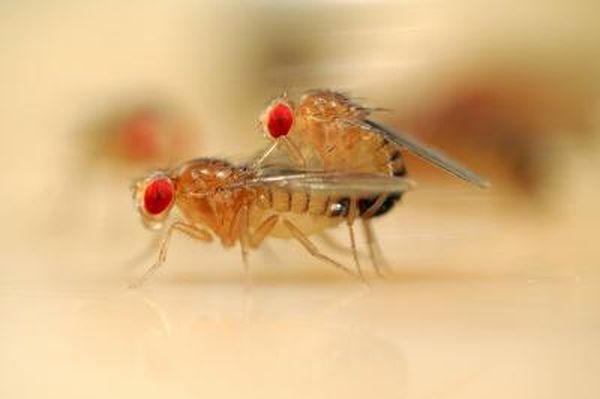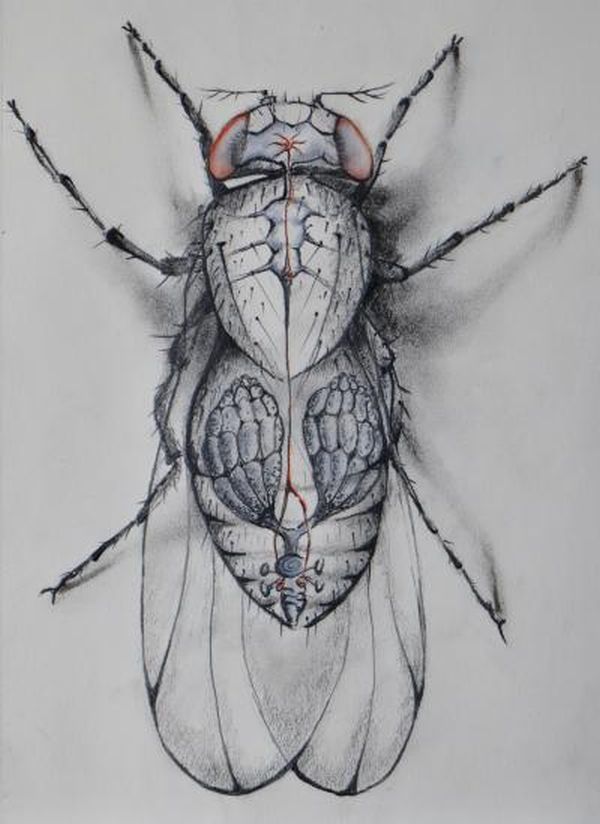Researchers are trying to unlock the mysteries of the brain that makes an individual to select a potential mate and study how these processes of selection differ in male than that of the female. The topic sounds interesting, however, studying humans for the purpose is rather difficult and so researchers are studying fruit flies to understand different events during courtship that might be apropos to humans and other creatures as well.
Majorly all the studies conducted in last 100 years, researchers were involved in comprehending the mating behavior of males. But ultimately the power of selection lies with the females, who decide whether to reject or accept the proposal from the potential mates. Therefore, researchers decided to understand various events, based on which female takes the final decision.
Neural mechanism varies in Female and Male Fruit Fly
Researchers studying female fruit fly brain, found two small groups of neurons that plays a vital role in modulating female decision of whether to mate or reject the male depending on his pheromones and courtship song. According to Dr Bruce Baker and his team from the Howard Hughes Medical Institute’s Janelia Farm Research Campus in Virginia identified that this group of neurons is genetically different from the neurons that use to drive male courtship behavior.
Dr Baker adds that the study provided them with the knowledge of neural mechanism that governs how sensory information brings about apt sexual behaviors. This information can be employed to compare, how similar sexual behaviors function in other animals.
The sketch above exhibit a transparent female fly with reproductive system and nervous system. Orange color represents the neurons that controls sexual receptivity — here they connect the uterus to the brain.
Female mating circuitry
The small group of neurons known as Abdominal-B neurons, are found in the abdominal nerve cord and reproductive tract. These neurons are vital for the female to stop and reach out to the courting male, said Dr. Leslie Vosshall from the Rockefeller University, New York. Dr Vosshall and her team discovered that female keep moving and ignored the potential males, when the neurons are inactive. While on the activation of the same neurons causes females to discontinue her movement and to interact with the males.
Sexual courtship is a two way process involving the exchange of signals between male and female before the process of mating begins, explains lead author Dr Jennifer Russel. Discontinuation of movement to take notice of potential mates is an important step in female behavior which finally leads to mating. Binding a group of neurons to this distinct response to males will help researchers to understand how female mating circuitry works.
Sex peptide
In another study, researchers examined the effects of sex peptide a small protein that reaches females along with the male sperms. These are identified by sensory neurons located in the uterus. Sex peptide then alters female behavior, making them unwilling to mate again for almost next 10 days. The researchers studied the neural pathway that gets altered when sex peptide are identified by sensory neurons of the uterus. Dr Mark Palfreyman from the Research Institute of Molecular Pathology in Vienna, Austria suggests that identification of sex peptide signals the area of the fruit fly’s brain that is comparable to the hypothalamus, which in vertebrates is known to be central in regulating sexual receptivity. This area of the brain connects the nervous system to the hormonal system or the endocrine.
Researchers say that these studies need further in depth research, but the findings definitely suggest that similar neuroendocrine system has a crucial role to play in controlling sexual behavior ranging from fruit flies to large vertebrates.
Source: EurekAlert





